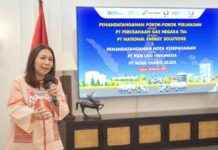Serangga: The Future of Animal Protein?
Indonesia is no stranger to innovative approaches to nutrition, and a recent proposal by the National Nutrition Agency head, Dadan Hindayana, has sparked discussions nationwide. The use of insects as an alternative animal protein source in the Nutritious Free Meal Program (MGB) is on the table. But is this idea just a passing trend or a sustainable solution for the future?
Expert Opinions: The Nutritional Value of Insects
Dr. Johanes Casay Chandrawinata, a nutrition specialist, sheds light on the nutritional benefits of insects. Contrary to popular belief, insects are not only a viable protein source but also rich in essential nutrients. With over 2,000 edible insect species worldwide, these tiny creatures pack a powerful punch when it comes to calories, fat, and protein content.
Comparing Nutritional Content
Let’s take a closer look at the numbers: per 100 grams, raw crickets contain 460 calories, 18.5 grams of fat, and 69 grams of protein. In comparison, beef has 250 calories, 15 grams of fat, and 26 grams of protein per 100 grams. These figures highlight the potential of insects as a nutritious protein alternative, especially in regions where traditional protein sources are scarce.
Cultural Considerations and Challenges
While the nutritional value of insects is undeniable, cultural norms and habits play a significant role in their acceptance as food. Dr. Johanes emphasizes that the success of insect consumption policies hinges on community attitudes and practices. In Indonesia, where insect consumption is not widespread, introducing insects into the diet may face resistance.
Health Concerns and Allergies
Moreover, the prevalence of allergies, particularly in children, raises valid concerns. Individuals allergic to seafood, such as shrimp, are more likely to develop allergies to insects as well. For those with existing food allergies, caution is advised when considering insect consumption to prevent adverse reactions.
Conclusion: Balancing Innovation and Tradition
As Indonesia explores new avenues to address nutritional challenges, the debate over using insects as a sustainable protein source continues. While insects offer a promising solution, cultural acceptance, health considerations, and allergy risks must be carefully weighed. The path to a more sustainable food future may lie in striking a balance between innovation and tradition. Would you be willing to try insects as a protein source, or does the idea bug you?






















